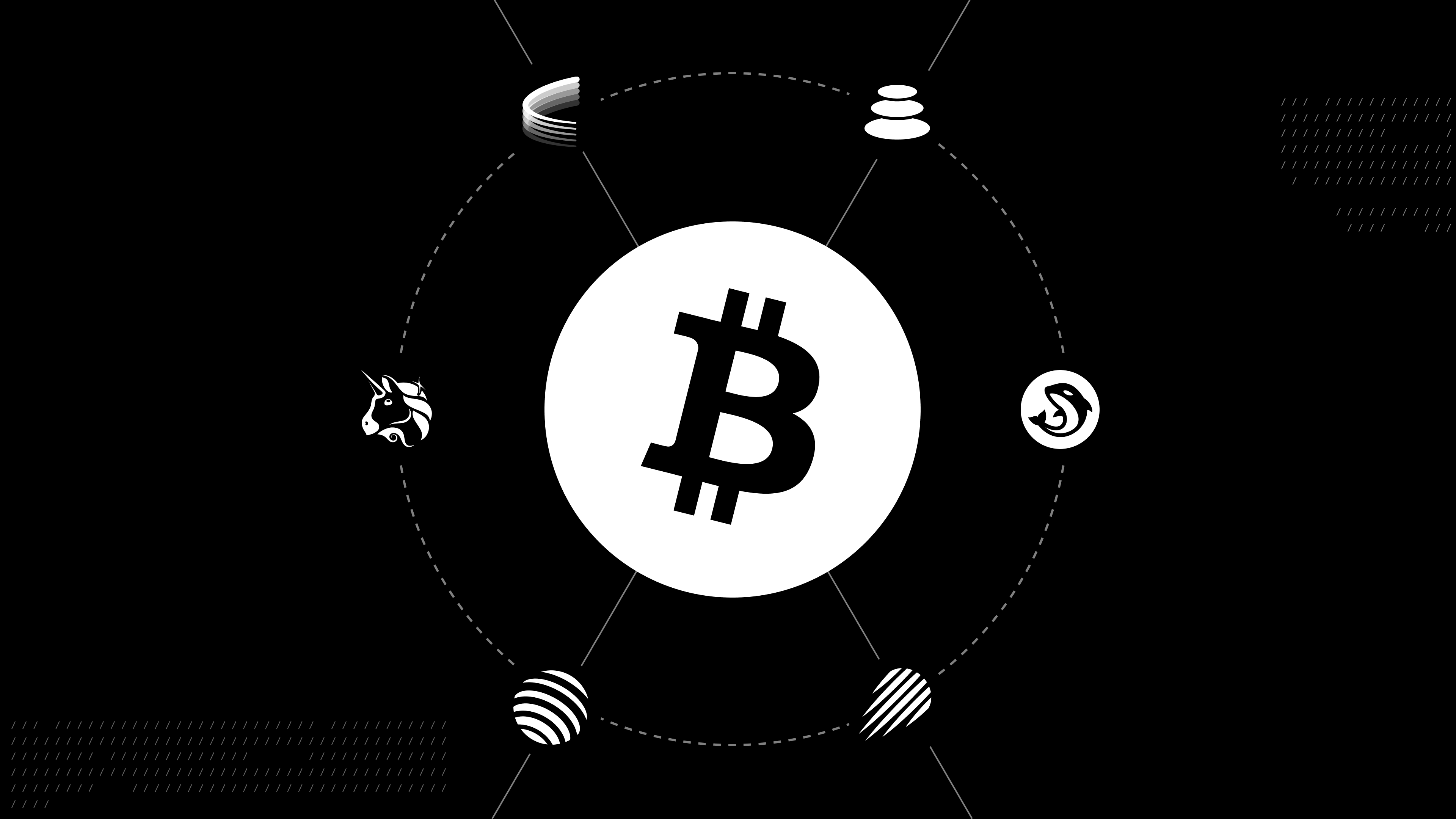February 28, 2024

Through all of BTC’s peaks and valleys, long has the ecosystem’s rallying cry echoed: HODL! But for many of today’s BTC asset holders, the allure is growing to seek profit outside of the confines of simply hodling BTC. This is evidenced by the [sustained demand](https://dune.com/dgtl_assets/bitcoin-ordinals-analysis) for Bitcoin-inscribed art, [strong developer activity](https://twitter.com/thesis_co/status/1750558657644048489) for building Bitcoin L2s, and [continued expansion](https://defillama.com/protocol/wbtc) of Bitcoin DeFi.
The current Bitcoin narrative is hyper-focused on the first two innovations: Ordinals and L2s. Unlocking the $1T market cap of BTC via BTC staking can be a game changer for Bitcoin-focused DeFi, and spark a catalyst for a strong period of growth in the blockchain economy.
However, amid the exploration of these BTC-DeFi protocols, a timeless adage of Bitcoin wisdom reverberates louder than ever: security stands paramount above the novelty of an insecure promise of profit. That’s why a viable BTC staking must remain balanced, ensuring the path to profitability affords a rigorous adherence to security and the safeguarding of assets.
The focus on security and growth separates BTC holders from wanton gamblers who often crowd the space’s headlines. With the ideal of a growing BTC DeFi ecosystem in our head, let’s not forget what the mistakes of previous cycles taught us.
## BTC Lending, a Sketchy Past
The centralized, institutional investor-friendly approach of early BTC-supported financial services unwittingly exposed the flaws of non-sovereign approaches when these institutions failed.
[For Celsius](https://celsius.network/), once lauded among the most influential crypto lenders, unsustainable efforts to make good on promised high yields failed to compensate for the volatile nature of the crypto market. Ultimately Celsius left [$5.5 billion](https://blocktribune.com/crypto-platform-celsius-bankruptcy-judge-hears-arguments-in-two-adversarial-proceedings/) in liabilities on the table when it capsized after market conditions worsened. Sometimes one central provider’s failure spurs that of another such as in the case of BlockFi, which [halted withdrawals](https://www.theblock.co/post/185753/blockfi-suspends-withdrawals-after-ftx-collapse) in light of FTX contagion.
For these painful industry examples, efforts remain underway to make it right with customers, albeit sometimes in the form of [backroom deals](https://www.theblock.co/post/276370/judge-approves-blockfi-and-3ac-settlement). Despite those efforts, the implosion of those financial institutions serves as a prescient reminder, underscoring two important non-negotiables for BTC staking:
* Self-custody > trusting a centralized entity
* Know where your yield comes from
## Tokenized BTC: The Portal to BTC DeFi
Centralization risk does not exist exclusively in traditional financial institutions, it also has permeated into our on-chain DeFi ecosystem. wBTC is the primary asset to look at when analyzing BTC-DeFi as it currently exists on EVM chains (and more recently, the Cosmos IBC). Before looking at the market appetite for wBTC yields, it’s important to note that demand for wBTC has not followed the market trend, with an outstanding supply nearly flat since the FTX collapse:

*[Source: 21Shares Dune](https://dune.com/21co/wbtc)*
Crypto participants are recognizing the dangers of relying on centralized providers to custody their assets, which is why we see decentralized alternatives like [Threshold](https://docs.threshold.network/) approaching supply ATH:

*[Source: Threshold Dune](https://dune.com/threshold/tbtc)*
While the tBTC market cap is only a small fraction of wBTC’s (2k+ BTC supply vs. 156k), we expect this trend of preferring decentralized alternatives to continue, especially as the Bitcoin L2 market grows. Regardless, the trend of tokenized BTC is crucial to understanding the future of BTC yield generation.
## Yield on BTC or Staking BTC?
BTC DeFi and the idea of “BTC yield” is expanding. Currently, the main way to earn on BTC is via yield farming, whether LPing on exchanges to earn fees/emissions, or various forms of lending tokenized BTC – the majority of wBTC TVL resides in Aave, where $1.3B is earning a [meager .09% APY](https://app.aave.com/markets/).
Now, with the advent of BTC staking in protocols like Babylon, bitcoin holders can earn emission rewards for securing a PoS chain, much like the structure of Ethereum or Cosmos IBC chains.
The underlying theme of both of these is “earn yield on your BTC”, but we will simplify the idea of yield on BTC to just “BTC staking”. The reason for this is, in reality, the vast majority of users are not going to be individually farming DEXes nor micro-managing their BTC yield farming positions. Instead, aggregators like [Beefy Finance](https://app.beefy.com/), who simplify position management, will give users a platform to “stake” their BTC and automate the yield process, whether it is via yield farming or staking to validate chains. These positions can also be tokenized to create a “liquid staking” product, akin to what Lido has done for Ethereum.
So far we’ve covered:
* Previously bunk forms of BTC lending
* Tokenized BTC’s relevance to BTC DeFi
* BTC Yield via a liquid-staked BTC
Now, let’s look at why staked BTC will grow multiples from its current size today. The primary point of evidence: demand for BTC yield is stronger than ever.
## Current BTC Yields
### Case Study on Osmosis
Osmosis and the wider Cosmos IBC ecosystem represent a fertile ground for innovative DeFi products, with the user base more willing to test out new concepts and experiment with their assets.
Cosmos users recognize the value of BTC and how it can help grow applications within the IBC. [Last week](https://twitter.com/osmosiszone/status/1759941103493734749), wBTC launched natively on Osmosis, and it already ranks within the top 10 of assets by liquidity for the network:

*[Osmosis Info](https://info.osmosis.zone/)*
Yes, $4M in BTC liquidity is not significant, but given Osmosis is the liquidity hub of the IBC and wBTC just launched, this quick adoption cements two points:
1. **BTC liquidity is deep and ubiquitous**. We can safely assume that Osmosis users are not BTC maxis, yet the BTC trading pool is already deep enough to support trading activity for any longer tail assets. In other words, BTC can help bootstrap DeFi because of its liquidity.
2. **BTC holders actively seek yield**. Within one week of launch, wBTC holders jumped on the opportunity to expand their yield farming to different chains. As the bull market continues, this behavior will only increase.
And with increased liquidity, we start to see BTC [lending markets](https://app.nolus.io/stats#alert) and [degen yield strategies](https://twitter.com/AirdropGlideapp/status/1761378387698843977) popping up. Without needing to state the obvious, active yield generation strategies don’t just exist on Osmosis, but are extremely popular within Ethereum’s wBTC as well.
### BounceBit
A relatively new company making a splash is [BounceBit](https://bouncebit.io/about), which is building a dual token PoS chain (BTC and Bounce token.) The team recently stated on a [Twitter space](https://twitter.com/TrustlessLabs/status/1762475022378242507) that they are focusing on building for BTC yield, and are not worried about the tech for right now. They believe that BTC users are eager to earn and put their BTC to use, and so far, [$500M in capital](https://twitter.com/bounce_bit/status/1762381054738878586) agrees with them.
The structure of the yield is three-fold: validator/stake rewards, [funding rate arbitrage](https://docs.bouncebit.io/user-guides/how-to-apply-for-btc-yield-generation), and farming within the BounceBit DeFi ecosystem.

*[Source: BounceBit](https://bouncebit.io/)*
While BounceBit is firmly within the CeDeFi category and does not align with Bitcoin technically or economically, its early success in gathering significant TVL shows yet again that BTC holders are eager to deploy their BTC.
### Merlin Chain
Merlin Chain is another recently launched BTC L2 that shows the demand to earn profit outside of hodling BTC is strong. Since their launch in early February, they’ve already accumulated over [30k in BTC deposits](https://defillama.com/protocol/merlins-seal), making it among the largest BTC projects by TVL.
## Future of Bitcoin Staking
Whatever the form of yield, staked BTC requires custody architectures to bridge BTC across them that align with Bitcoin as a protocol. Bitcoin builders (and users) should ensure that their tokenized BTC asset is minted via a trust-minimized bridge. Again, this is available via a [proven model](https://blog.threshold.network/tbtc-is-for-l2s/) of tBTC, or more recent developments like [Spiderchain](https://blog.lopp.net/an-introduction-to-spiderchain/amp/) by Botanix Labs. Botanix will use the tokenized BTC on Spiderchain as its PoS consensus asset.
### Babylon
Capturing all the themes of this article, [Babylon](https://twitter.com/babylon_chain) is a recently launched Bitcoin project that seeks to align the demand for BTC yield with the demand for security. By staking BTC, Babylon users can lend their economic strength to secure Proof of Stake (PoS) based chains.
Borrowing from the EigenLayer and Cosmos ecosystems, Babylon’s staking protocol is optimized around Bitcoin’s scripting language to compensate for the network’s lack of smart contract compatibility. Accountability assertions make it possible to audit bad behavior on the network, and a [custom-built finality gadget](https://docs.babylonchain.io/assets/files/btc_staking_litepaper-32bfea0c243773f0bfac63e148387aef.pdf) that adds an extra round of signing using Extractable One-Time Signatures (EOTS) provides security guarantees for the protocol/ If used more than once, an EOTS will leak the private key that was used to generate it, and Bitcoin timestamping ensures a stake under penalty can be slashed before it is unstaked.
Now in testnet, Babylon will be interesting to watch to see how strong the appetite is for staked BTC. The value of Babylon’s services for BTC holders is twofold:
1. Yield on BTC
2. Increasing the economic security of PoS chains
## A High Bar for Success
The current growth of Bitcoin DeFi is a small blip compared to what’s to come. Today, the combined market cap of wBTC and tBTC is $9.143B, less than 1% of the total market cap of bitcoin. From Pantera Capital’s [recent investor letter](https://panteracapital.com/blockchain-letter/the-absence-of-bad-things/), they extrapolated the potential of BTC DeFi on Bitcoin L2s based on current Ethereum/Ethereum DeFi market caps:
> *If DeFi reaches Ethereum’s proportions on Bitcoin, we could expect the total value of DeFi applications on Bitcoin to be worth $225 billion (25% of Bitcoin). Over time, it could range between $72 billion and $450 billion (8% and 50%). This assumes no change in Bitcoin’s current market cap.*
Bitcoin staking will be a strong, potentially the leading, beneficiary from this expansion in the DeFi market. Through a surge in demand for BTC yield in Bitcoin L2 DeFi, or newer creations like BTC-secured PoS, the ability to earn on idle BTC is about to hit a massive expansion period.
The winning solution will provide users with deep and instant liquidity to a staked BTC product, sustainable and transparent yields, and be bitcoin first, prioritizing aspects like asset security and decentralization. As we said in the intro: security > novelty, and this rings especially true with the case of bitcoin staking.
Sign up for the Thesis* newsletter
You&aposll receive blog posts about company building, crypto, and more in your inbox, about twice per month.
